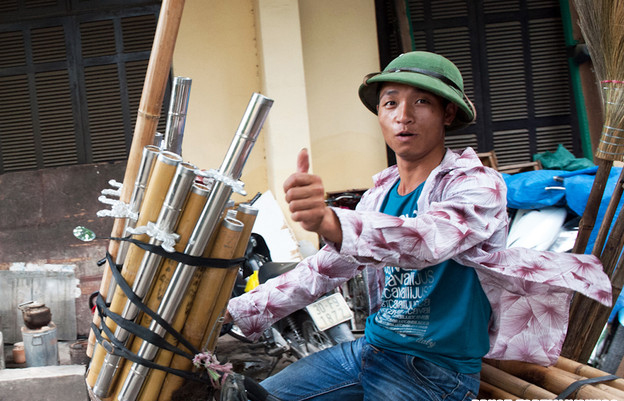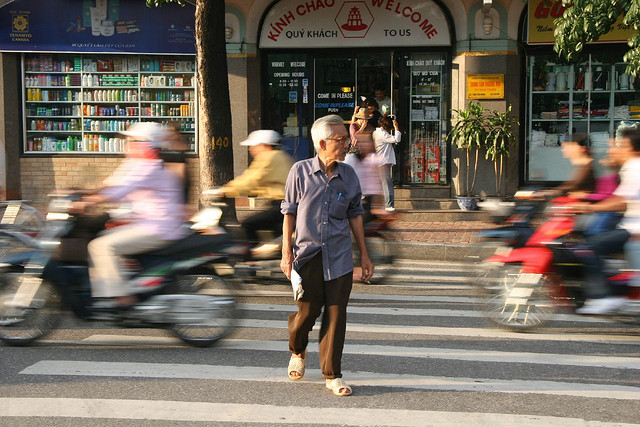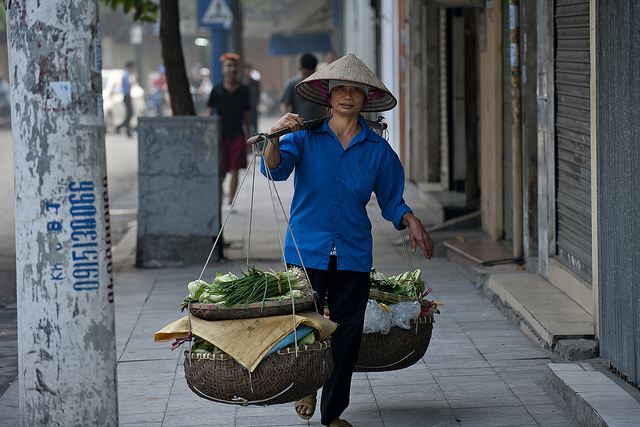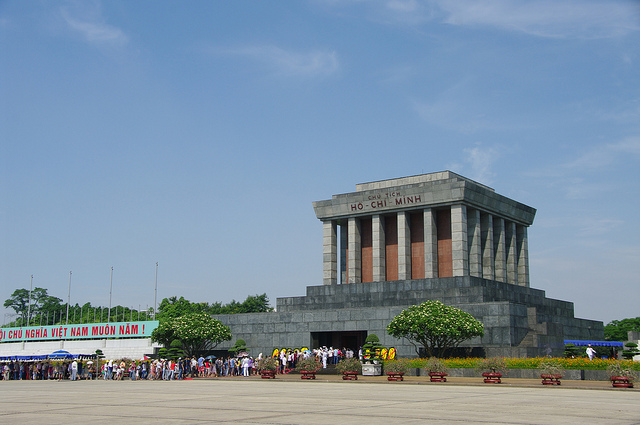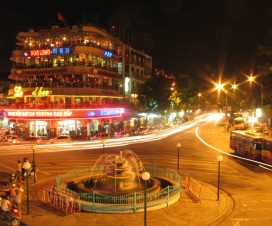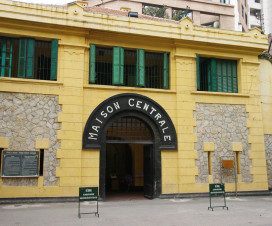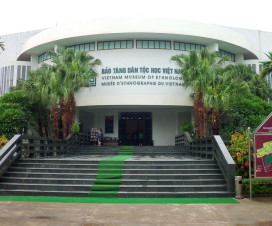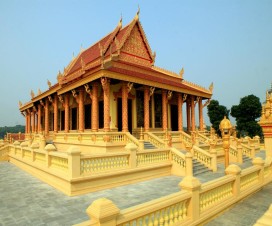Travelling in Southeast Asia, what you get in your sight seems to be the same and the same after a while. It is all temples, heat and tourist traps, right? But it is not right any more until you get to Hanoi.
It can be said that the Vietnam’s capital is like a breath of fresh air blowing into the life. The city is graceful pastiche of cultural influences from the French and Chinese, while the Vietnamese have stubbornly retained their local ways.
So what makes Hanoi stand out from all other cities in Asia, let’s find out together.
1. Leap-of-faith traffic
If you experience the traffic of Hanoi, you will see that crossing the road in Hanoi is unlike anywhere else. It’s a little bit like bungee jumping. You just have to believe it when people tell you “it’s going to be alright, just keep walking” despite all your instincts telling you not to take the leap.
Once you do take that first step off the pavement, there’s no turning back. You can only continue putting one foot in front of the other and hope that the mopeds will swerve around you instead of into you.
And it always works. The road traffic is crazy in Hanoi, but it is organized chaos and somehow pedestrians always make it to the other side.
On foot it’s a test of faith in fellow humankind as you step into moped madness, trusting scooters to avoid you as you cross the road.
On the back of a motorbike, it’s like jumping into a river and running the rapids. Precarious and exhilarating.
2. Very fresh beer
Coming to Hanoi, travelers really like to enjoy its cheap, unpasteurized beer made fresh daily – bia hoi. They can enjoy it all day long in every corner of this capital city.
The flavor of Bia Hoi depends on the rate at which the beer is being sold and how much the seller has decided to water it down that day.
By day’s end, unsold beer goes off and is thrown away. But there’s rarely any left each evening.
The ridiculously cheap price and the fact that it is served out of plastic cups makes this the perfect anti-yuppie, anti-elitist brew, suited to the ideals of a socialist country.
Find it on every happening Hanoi corner, sometimes paired with food, other times with a television and karaoke machine offering classic tunes by Abba and Boney M.
The most famous Bia Hoi for travelers are right in the heart of the old quarter on Bia Hoi Corner at the intersection of Luong Ngoc Quyen and Ta Hien streets.
3. The ultimate old quarter
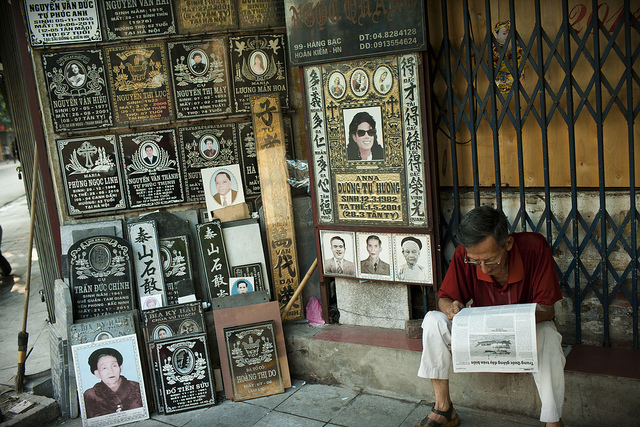
Hang Bac in the Old Quarter. Once the guild street of silversmiths, now home to travel agencies, tourist cafes and tombstone carvers.
The Old Quarter isn’t just a figurative phrase in Hanoi. Going through more than 1,000 years and still going strong, Hanoi Old Quarter seems to be a special corner of Hanoi. Its maze of at least 36 streets keeps beautiful traces of an old Hanoi.
As the oldest surviving neighborhood in Vietnam, the Hanoi Old Quarter became a market place where artisans organized themselves into 36 guilds (the guild of silk, silver, bamboo rafts, conical hats, and sweet potatoes to mention a few), each occupying a street.
Although being overwhelmed by tourism, motor bikes, bars and zippo lighter touts, tourists can still see the traces of such craftsmen via small temples, pagodas and hidden communal guild houses remained here.
More iconic in the Old Quarter now are the tube houses, skinny and tall by force of a land tax on street frontage. You can see its typical examples at 87 Ma May Street or at 38 Hang Dao.
To spot French colonial townhouses whose lower floors are often disguised by commercial facades, you just have to look at the roof of the house which is usually preserved in its original state.
The Vietnamese heart of colonial Hanoi, the Old Quarter is where the anti-French movement originally headquartered itself.
4. Pop war
The Vietnam War is remembered as much for the atrocities that occurred as it is for the anti-war demonstrations abroad.
A pilgrimage to Hanoi is part of the catharsis sought by veterans of the Vietnam war.
Others who grew up hearing cool protest songs by Bob Dylan and The Rolling Stones, remain fascinated by a war that is associated with the rebellious 1960s and 1970s.
It is a war that influenced a decade of youth culture in the U.S. and continues to inform pop culture around the world.
For scars of U.S. bombings of Hanoi check out the Long Bien bridge which crosses the Red River and transported supplies from the port at Hai Phong. Or visit the Hoa Lo prison, dubbed the “Hanoi Hilton” by American GIs.
5. Shoulder-pole retail
As a tourism capital, Hanoi is surprisingly devoid of mega shopping malls. Instead, there’s the rather more interesting one-woman shoulder pole shop.
Whatever you want comes to you in rattan baskets looped through a rope and balanced in pairs on bamboo poles resting on the shoulders.
These are both shop front and transport for foot vendors who can frequently be spotted underneath conical hats, triggering the photographic instinct in tourists.
Buy something — bowls of pho, mangosteens, bunches of flowers, hair clips, household utensils — and the photos will be accompanied by a broad Vietnamese grin.
6. Body of interest
Hanoi is the only city in Southeast Asia with an embalmed leader on display. The real body of Ho Chi Min lies preserved in his mausoleum, much against his own wish to be cremated.
Such is the consequence of being the person in the middle of a personality cult.
Real emotion pours out of the thousands who come to view his body each day and view the man not as a dictator but as the hero of Vietnam’s independence from foreign control.
7. So French, but not
Whilst people from Hanoi are considered aloof by southern Vietnamese, they have nothing on Parisians.
The Vietnamese have not forsaken their French colonial heritage and it is a great place to enjoy French aesthetics with Asian hospitality.
Many wonderful French buildings remain, mostly functional and not a few sporting a fashionable bohemian decay.
However, the success of French-Vietnamese fusion is best experienced through Hanoi’s food.
French baguettes are stuffed with Vietnamese pâté and pickled vegetables to create the rich and tangy banh mi sandwiches.
Coffee is an obsession passed on by the French. In Hanoi, your espresso drips through a small aluminum filter into sweet condensed milk.
Cafés are still arranged in the French style, as if the street is a theater and the café is the audience section. But diners are usually perched on humble plastic or rattan chairs that are mere inches from the ground.

